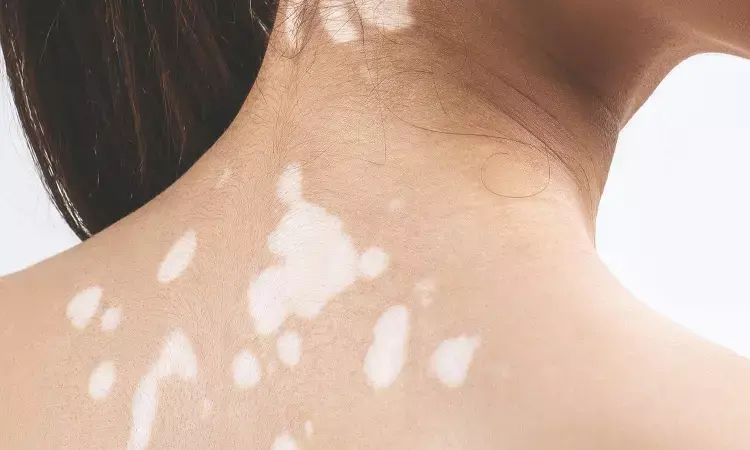- Home
- Medical news & Guidelines
- Anesthesiology
- Cardiology and CTVS
- Critical Care
- Dentistry
- Dermatology
- Diabetes and Endocrinology
- ENT
- Gastroenterology
- Medicine
- Nephrology
- Neurology
- Obstretics-Gynaecology
- Oncology
- Ophthalmology
- Orthopaedics
- Pediatrics-Neonatology
- Psychiatry
- Pulmonology
- Radiology
- Surgery
- Urology
- Laboratory Medicine
- Diet
- Nursing
- Paramedical
- Physiotherapy
- Health news
- Fact Check
- Bone Health Fact Check
- Brain Health Fact Check
- Cancer Related Fact Check
- Child Care Fact Check
- Dental and oral health fact check
- Diabetes and metabolic health fact check
- Diet and Nutrition Fact Check
- Eye and ENT Care Fact Check
- Fitness fact check
- Gut health fact check
- Heart health fact check
- Kidney health fact check
- Medical education fact check
- Men's health fact check
- Respiratory fact check
- Skin and hair care fact check
- Vaccine and Immunization fact check
- Women's health fact check
- AYUSH
- State News
- Andaman and Nicobar Islands
- Andhra Pradesh
- Arunachal Pradesh
- Assam
- Bihar
- Chandigarh
- Chattisgarh
- Dadra and Nagar Haveli
- Daman and Diu
- Delhi
- Goa
- Gujarat
- Haryana
- Himachal Pradesh
- Jammu & Kashmir
- Jharkhand
- Karnataka
- Kerala
- Ladakh
- Lakshadweep
- Madhya Pradesh
- Maharashtra
- Manipur
- Meghalaya
- Mizoram
- Nagaland
- Odisha
- Puducherry
- Punjab
- Rajasthan
- Sikkim
- Tamil Nadu
- Telangana
- Tripura
- Uttar Pradesh
- Uttrakhand
- West Bengal
- Medical Education
- Industry
Ultraviolet light and methotrexate combo effective for vitiligo management: Study

Ultraviolet B (UVB) rays of 311 nm, decreased the Dermatology Life Quality Index (DLQI) index by 88.5% when combined with tab methotrexate.
Uzbekistan: A recent study in Web of Scientist: International Scientific Research Journal has suggested that focusing on patients' life quality is an important factor for the management of vitiligo patients. Also, relevant supportive group-based consultations and therapies are suitable methods for its (vitiligo) management.
Vitiligo is a skin disease characterized by discolored patches in different areas of the body, including the skin, mucous membranes, and hair. It has a major impact on the patients' quality of life, many of whom feel distressed and stigmatized by their condition. Given this, it becomes important to recognize and deal with the psychological components of this disease to improve their quality of life and to obtain a better treatment response.
Against the above background, Maxmudov Farxad Axmedovich, Bukhara state medical institute, Bukhara, Uzbekistan, and colleagues aimed to to assess the influence of vitiligo on the quality of life of patients with the help of the questionnaire of the dermatology life quality index (DLQI).
The study included 60 patients which were divided into 2 separate groups. Each patient was required to answer questions via a 10-point questionnaire before and after treatment.
The questionnaire addressed various aspects of a patient's life, including professional, household, sexual, social, and personal norms. The questionnaire would determine the degree of influence of vitiligo in the individual's life. For each question, 4 variant answers were offered, each of which was rated from 0 to 3 points. In the end, 0-1 point would indicate "no influence on the patient's life", while 21-30 points would state that "the disease has an extremely strong influence on the life of the patient".
Based on the study, the researchers found the following:
- The mean DLQI value was 11.4± 2.07and 11.9 ± 2.03points, which corresponded to the strong influence of disease on the life of the patient.
- The average value of the index decreased to 2.03 ± 0.15 points, and secondly to 1.72 ± 0.27, after the methods of combination therapy were applied.
- Statistically significant differences between indicators were revealed before and after treatment (11.4 ± 2.07 versus 2.03 ± 0.15 and 11.9 ± 2.03 versus 1.72 ± 0.27).
- Results of treatment with UVB rays of 311 nm resulted in the index decreasing by 9 times (88.5%) when treating with a combined method using tab methotrexate.
- Average value of DLQI in both groups did not differ between male and female patients.
Overall, the utilization of the DLQI instrument indicated that combined therapy had positive implications regarding the burden of vitiligo in affected patients.
"Such dynamics of indicators was found in full compliance with the dynamics of regeneration of clinical manifestations in patients," the team wrote.
Reference:
The study titled, ""Evaluation of the Quality of Life of Vitiligo Patients by the Effectiveness of Combination Therapy Using the Dermatology Life Quality Index (DLQI)," was published in the Web of Scientist: International Scientific Research Journal.
DOI: https://wos.academiascience.org/index.php/wos/article/view/389/363
Dr Kamal Kant Kohli-MBBS, DTCD- a chest specialist with more than 30 years of practice and a flair for writing clinical articles, Dr Kamal Kant Kohli joined Medical Dialogues as a Chief Editor of Medical News. Besides writing articles, as an editor, he proofreads and verifies all the medical content published on Medical Dialogues including those coming from journals, studies,medical conferences,guidelines etc. Email: drkohli@medicaldialogues.in. Contact no. 011-43720751


